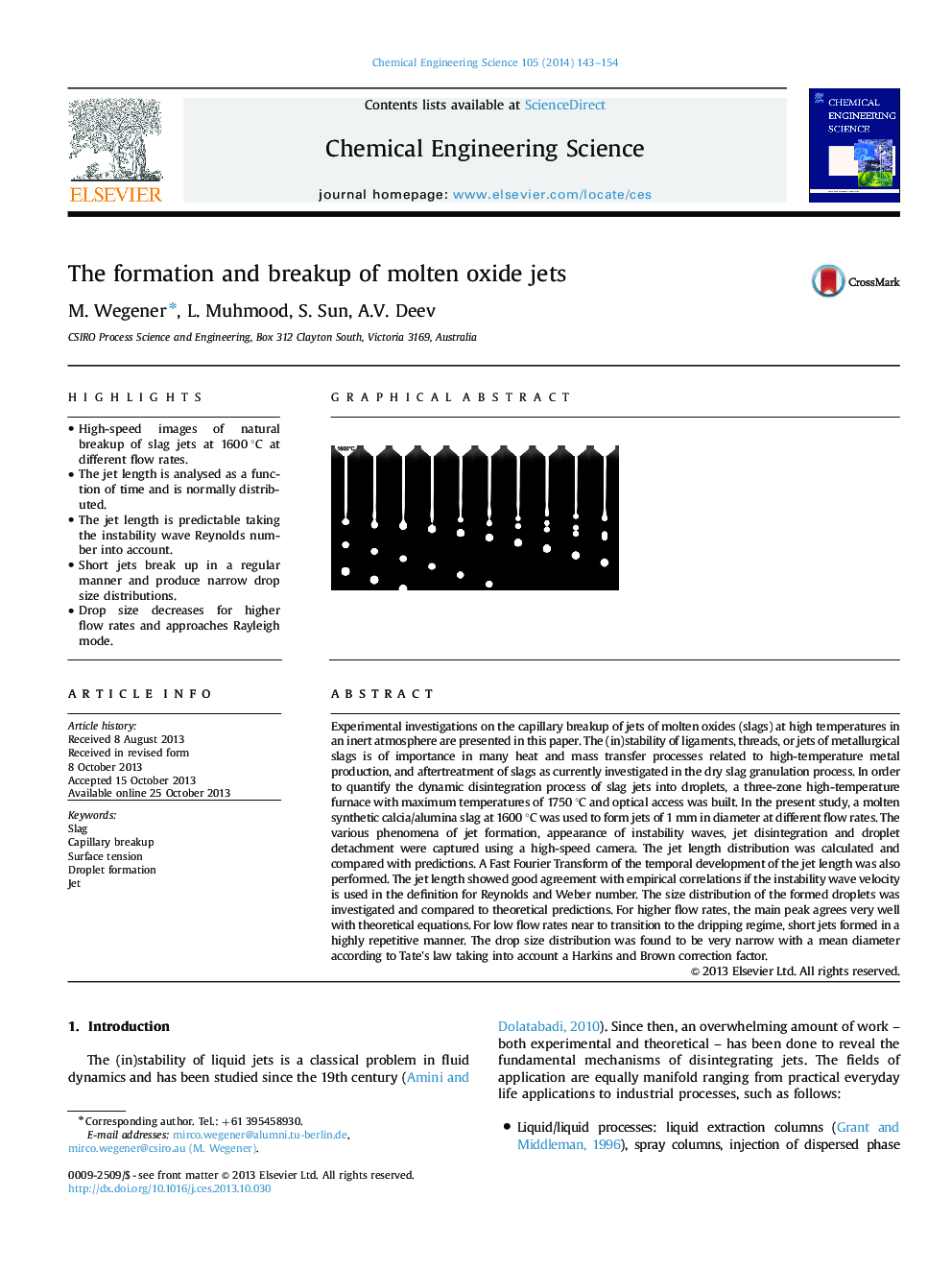| کد مقاله | کد نشریه | سال انتشار | مقاله انگلیسی | نسخه تمام متن |
|---|---|---|---|---|
| 154984 | 456876 | 2014 | 12 صفحه PDF | دانلود رایگان |
• High-speed images of natural breakup of slag jets at 1600 °C at different flow rates.
• The jet length is analysed as a function of time and is normally distributed.
• The jet length is predictable taking the instability wave Reynolds number into account.
• Short jets break up in a regular manner and produce narrow drop size distributions.
• Drop size decreases for higher flow rates and approaches Rayleigh mode.
Experimental investigations on the capillary breakup of jets of molten oxides (slags) at high temperatures in an inert atmosphere are presented in this paper. The (in)stability of ligaments, threads, or jets of metallurgical slags is of importance in many heat and mass transfer processes related to high-temperature metal production, and aftertreatment of slags as currently investigated in the dry slag granulation process. In order to quantify the dynamic disintegration process of slag jets into droplets, a three-zone high-temperature furnace with maximum temperatures of 1750 °C and optical access was built. In the present study, a molten synthetic calcia/alumina slag at 1600 °C was used to form jets of 1 mm in diameter at different flow rates. The various phenomena of jet formation, appearance of instability waves, jet disintegration and droplet detachment were captured using a high-speed camera. The jet length distribution was calculated and compared with predictions. A Fast Fourier Transform of the temporal development of the jet length was also performed. The jet length showed good agreement with empirical correlations if the instability wave velocity is used in the definition for Reynolds and Weber number. The size distribution of the formed droplets was investigated and compared to theoretical predictions. For higher flow rates, the main peak agrees very well with theoretical equations. For low flow rates near to transition to the dripping regime, short jets formed in a highly repetitive manner. The drop size distribution was found to be very narrow with a mean diameter according to Tate's law taking into account a Harkins and Brown correction factor.
Figure optionsDownload high-quality image (77 K)Download as PowerPoint slide
Journal: Chemical Engineering Science - Volume 105, 24 February 2014, Pages 143–154
